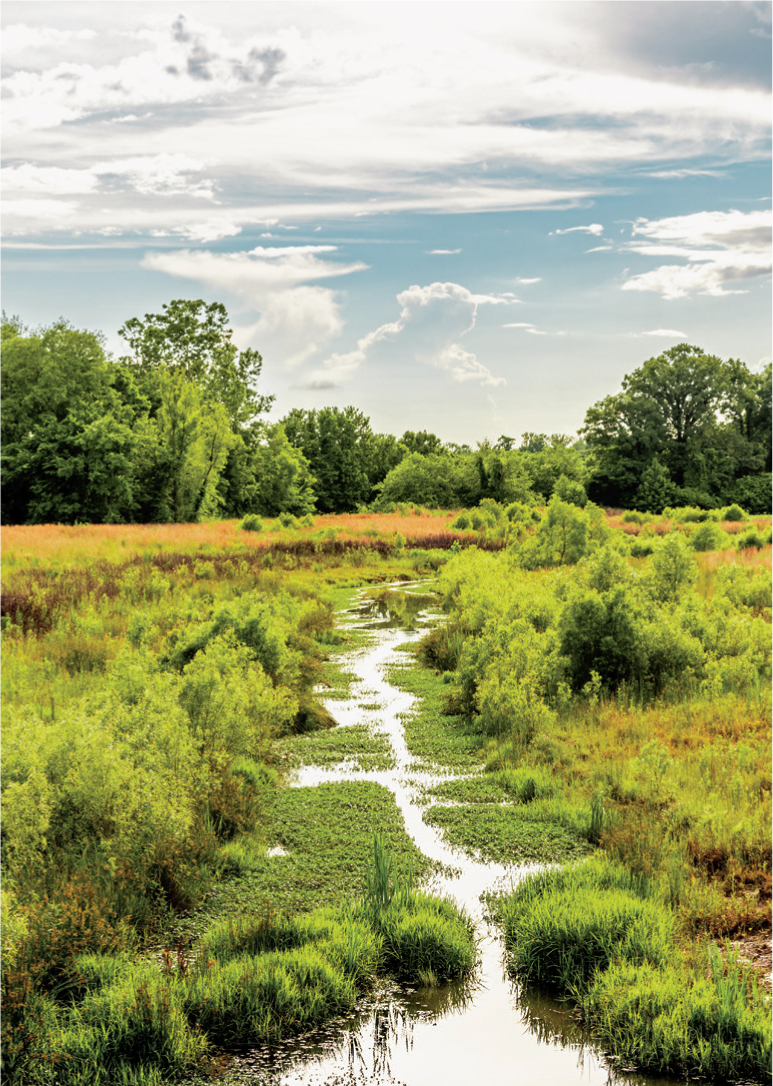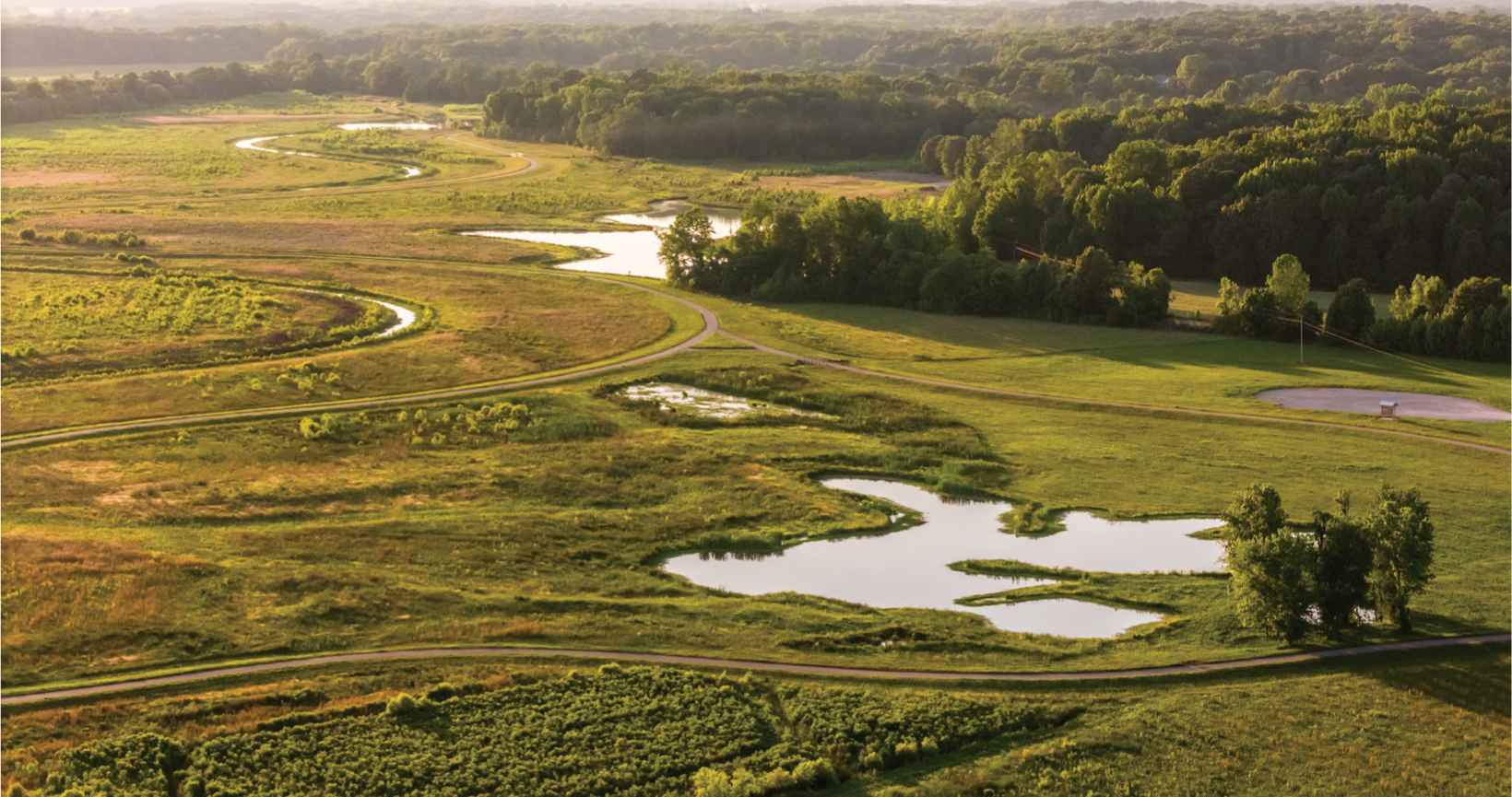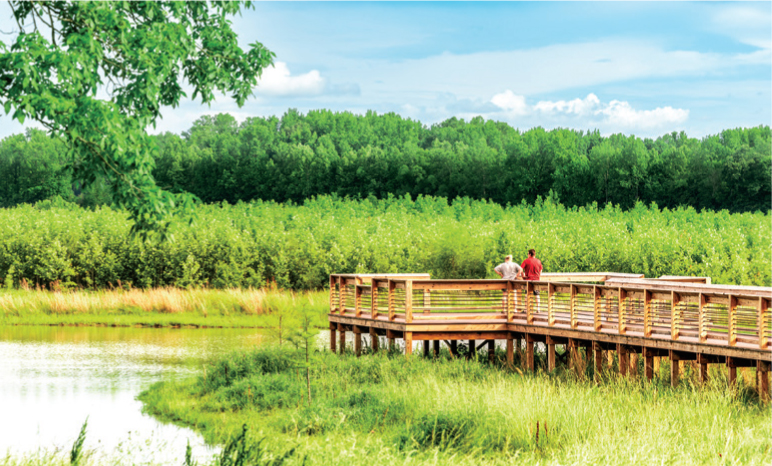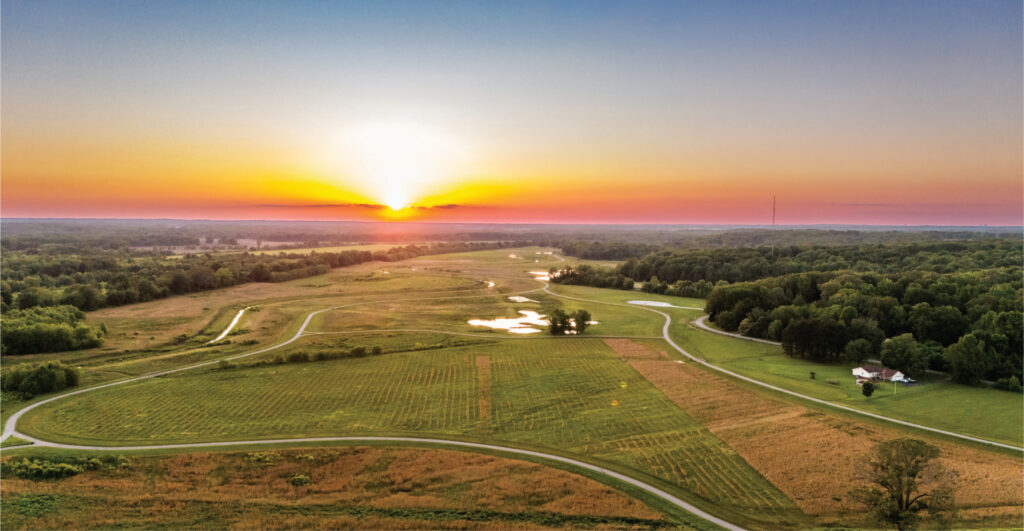Middle Fork Bottoms State Park provides combination of recreation and flood control
Photographs by Tennessee Drone Services Inc.
In August of last year, Middle Fork Bottoms, located in the small community of Three Way north of Jackson, became Tennessee’s newest state park. Even though it still has that “new park smell,” it’s already a lovely place to enjoy the outdoors. And for Park Manager Michael Champagne, a 17-year veteran of Tennessee State Parks, it’s an exciting place to work because he gets to guide the building of a park from the ground up.
“I get to help decide everything from where the main entrance sign goes to what projects are worth pursuing,” he said. “It’s a challenge — but a fun challenge.”

Land in transition
Even before these 860 acres were designated as a state park, the property was already in transition from its former uses for row crop, sod and hog farming. A variety of groups and agencies — The Nature Conservancy, Tennessee Wildlife Resources Agency, West Tennessee River Basin Authority, city of Jackson, Madison County and Tennessee State Parks — have had a hand in this transition that went from farmland to flood plain restoration to a park with various habitats.
“We have oak savanna, grasslands, meadows, bottomland hardwoods, five small lakes and 2 miles along the Middle Fork of the Forked Deer River,” Champagne said.
That’s a lot of variety for a relatively small park.
Revitalization efforts that have already been accomplished are the planting of 250,000 hardwood trees that cover 450 acres, 5 acres of newly planted bald cypress and the restoration of 200 acres of wetlands.
Available now
While there are currently no facilities at the park, there’s still plenty to do. A 4-mile paved, interconnected trail is available for visitors wanting to hike, bike, go for a run or simply slowly meander in order to soak up the sights, sounds and scents. It is Americans with Disabilities Act compliant, so those in wheelchairs and other assistive devices will find it welcoming. No matter how you’re enjoying the trail, it will expose you to various species of animal residents as well as lakes with picturesque names like Papershell, Bulrush and Cypress. It also crosses the river.
Among the many creatures you might spy are the feathered residents — great egrets, great herons, red-winged blackbirds and numerous others.
“The park is popular with birders,” Champagne said. “The birding here is phenomenal.”
If you are a birding enthusiast or are simply curious about the more than 170 species of birds that have been spotted in the park, mark your calendars for May 24. A Birds of Middle Fork Bottoms State Park program will be held from 8 to 11 a.m. Advance registration and a $10 are required. More details can be found on the park’s website.
Several park residents are also of the furry, four-legged variety, such as white-tailed deer, coyotes, bobcats and rabbits.
Four of the five lakes are fishable, stocked with bluegill, catfish and bass. No fishing is allowed at Retriever Lake, which has been set aside for dog training purposes.
One of the lakes, Middle Fork Lake, is open to paddlers bringing their own paddle craft. No motorized craft are allowed, and life jackets must be worn.
In the works
While there are plans to add to the visitor experience of the park, don’t expect it to become a resort park with a golf course or overnight lodging. In the works, however, are a visitor center that will have a 150-seat meeting space and a gift shop. Construction is currently slated to begin this fall with the planned opening in December 2026 or early 2027.

Also planned for the future are two picnic shelters with nearby restrooms, a boardwalk from the visitor center to the river, kayak and canoe launches, a pollinator habitat and a floating classroom. Champagne is currently working on securing a grant for the last item on that list.
Unlike other parks
Champagne said the main reason that Middle Fork Bottoms won’t have a lot of the same types of recreational facilities that other state parks have is because the park is designed to flood and look swampy at times. You wouldn’t want a golf course in a place intended to periodically flood.
“The flood mitigation has had a huge impact on lowering flood risks in surrounding subdivisions and downstream,” Champagne said.
Just as this land is in transition, so is the park as an entity. Each time you visit, it will be slightly different based on the season and how far development has progressed. That’s all the more reason to visit often.


